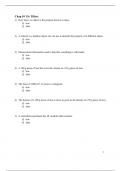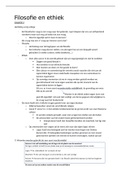Tentamen (uitwerkingen)
Test Bank for Physical Science, 13th Edition by Bill Tillery
- Vak
- Instelling
Test Bank for Physical Science, 13th Edition 13e by Bill Tillery. ISBN-13: 9362 Full Chapters test bank are included 1 What Is Science? 2 Motion 3 Energy 4 Heat and Temperature 5 Wave Motions and Sound 6 Electricity 7 Light 8 Atoms and Periodic Properties 9 Chemical Bonds 10 C...
[Meer zien]




